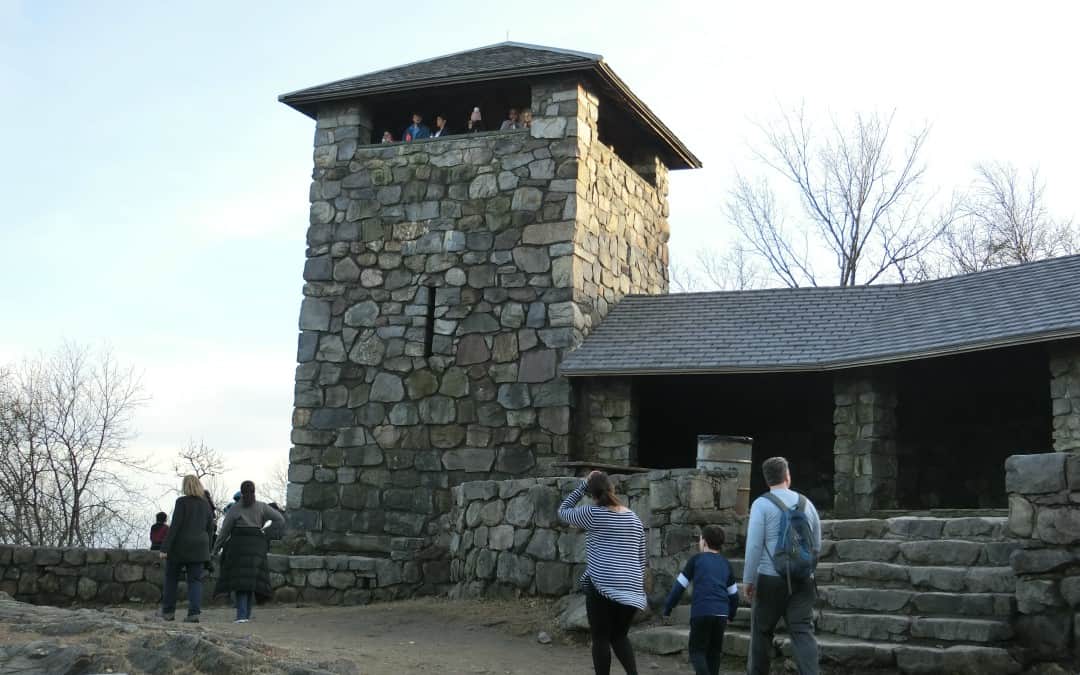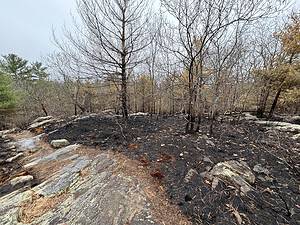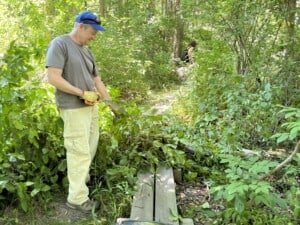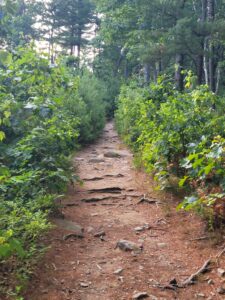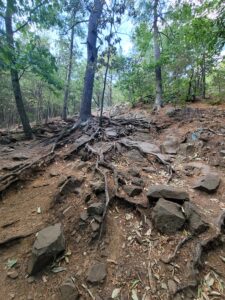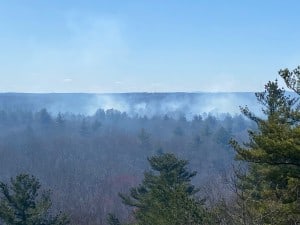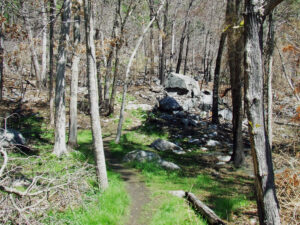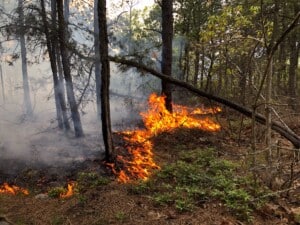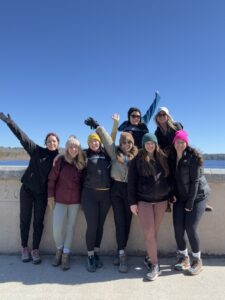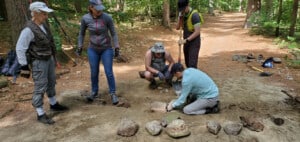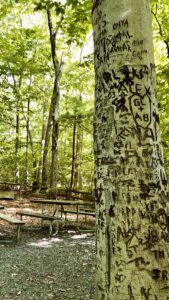Have you ever climbed Great Blue Hill to enjoy the spectacular view from Eliot Tower? Ever wondered who built this sturdy, stone building? Jim Briand, a Friends of the Blue Hills member and an avid hiker, looked into the history of this popular destination.
Seventy years ago this year the Civilian Conservation Corps completed work on the Eliot Tower on the Great Blue Hill. The members of the Corps had a vision of a rustic but inviting facility that would make the beauty of the Blue Hills accessible to every citizen. In addition to the newly completed observation tower, the “boys” of the Blue Hills CCC camp began work on an adjoining shelter that was to feature “a massive fireplace, a wide terrace fronting the shelter, outdoor tables and settees, two sanitaries and a layout of paths with other necessary landscaping.”
Today much of the CCC’s vision remains. The rough stone tower still stands above the surrounding land, offering unrivaled vistas in all directions. Hikers still climb its stone stairs to enjoy the view. Yet the remainder of the structure falls short of what the CCC had in mind. Graffiti mars the rough-hewn stone walls of the tower. The stout wooden doors with decorative iron hinges that once guarded the tower are nowhere to be seen. Old wires hang unattended from a long disused power service, and the bathroom, the “two sanitaries,” the CCC spoke of, is boarded up behind a locked, rusted door while bent, rusted screens cover the windows.
In the troubled days of March 1933 Franklin D. Roosevelt established the Civilian Conservation Corps as one of the first acts of the famous First 100 Days of his administration. Known affectionately as “Roosevelt’s Tree Army,” the Corps set out to address dangerously high levels of unemployment among young men ages 18 to 25. It gave them gainful employment working to restore the neglected parks and natural spaces of the nation. Organized into military style camps, the CCC took in three million young men over the nine years of its existence and built roads, trails, pavilions and fire towers and planted millions of trees to fight soil erosion.
Imagine all the CCC could accomplish in our parks if they existed today!

